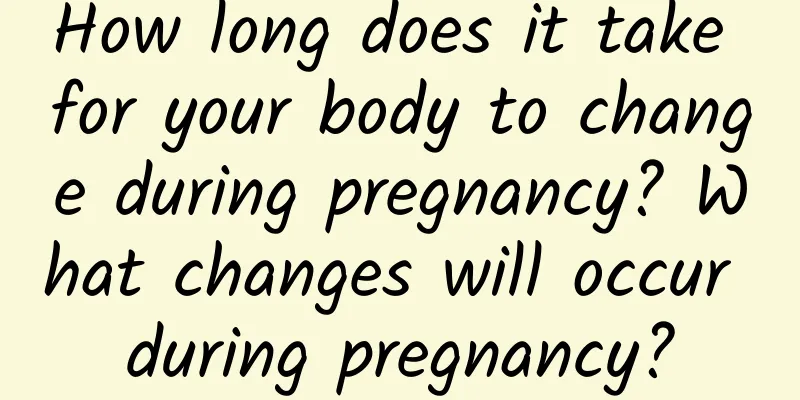How many days does a woman's menstrual period usually last?

|
Women's menstrual period is generally about seven days. If it is too long, there will be a delay in menstruation, which is very bad for women's health. If you are not careful, it may cause anemia. However, too short a period is also an abnormal reaction. The shortest time cannot be less than about five days. Within this range, it means that your menstruation is normal and does not cause any disease impact. In order to explain this issue, we must first understand the structure and physiological functions of female reproductive organs. The female internal reproductive organs consist of the ovaries, uterus, and fallopian tubes. The main function of the ovaries is to produce eggs and synthesize ovarian hormones, while the uterus and fallopian tubes are reproductive organs. The ovaries contain hundreds of thousands of follicles, each of which contains one egg. Before puberty, the follicles are essentially non-functional. During puberty, under the action of gonadotropin from the anterior pituitary gland, immature follicles gradually develop and synthesize estrogen. When the follicle matures and ovulates, the follicle wall collapses, the cells become larger and yellower, and are called the corpus luteum. It synthesizes estrogen and produces progesterone. As the ovaries change, the endometrium is also affected and undergoes corresponding cyclical changes. Estrogen causes the endometrium to thicken, the endometrial cells to increase in number and size, and the arterioles in the interstitium to become more tortuous and spiral, which is called the proliferative endometrium. After ovulation, due to the combined effects of estrogen and progesterone, the endometrium becomes edematous, the glands produce a large amount of mucus and glycogen, and the thickness of the endometrium increases from 1 mm to 6 mm, which is called the secretory endometrium. If the egg released at this time is fertilized, the fertilized egg is transported to the uterus through the fallopian tube for development, which is called pregnancy. The pregnancy tissue synthesizes a chorionic gonadotropin, which supports the continued development of the corpus luteum of the ovary. If the egg is not fertilized, the corpus luteum will atrophy and stop secreting estrogen and progesterone about 14 days after ovulation. At this time, the blood vessels in the endometrium will contract, the endometrium will necrotize and fall off, causing bleeding and forming menstruation. Therefore, the length of the menstrual cycle depends on the length of the ovarian cycle, which is generally 21-30 days, but varies from person to person, and may be 23-45 days, or even 3 months or half a year as a cycle. As long as it is regular, it is generally considered normal menstruation. The bleeding time is generally 3-7 days, and the total amount of bleeding each time is 30-50ml. Some people believe that menstrual volume exceeding 80ml is a pathological condition. |
<<: Can I drink vinegar during my period?
>>: Can you get pregnant without your period?
Recommend
Female right groin pain
Abdominal wall hernia is a relatively common surg...
What is the cause of curd-like leucorrhea?
Women have many problems with leucorrhea. To solv...
What kind of tea should women with damp-heat constitution drink?
What kind of tea is good for people with damp-hea...
A few days before menstruation, leucorrhea is stringy
Normal women are more concerned about their menst...
Can I do eyebrow tattoos while breastfeeding?
Love of beauty is a woman’s nature. If you cannot...
Why is the girl's urethra red and swollen?
A girl's urethra opening is close to the vagi...
What can I eat to cure uterine cold?
The pace of modern society is getting faster and ...
High uric acid levels are not just a symptom of gout, the kidneys are also silently "crying"! How to avoid kidney damage?
In the public's perception, high uric acid se...
Brown discharge during ovulation
Due to the particularity of women's physiolog...
Why is my aunt so irritable during her period?
Why do you feel bad during your period? No matter...
What to do if you have brown discharge during your 7th month of pregnancy
During pregnancy, if a woman has any abnormalitie...
Does pelvic inflammatory disease cause stomach pain?
The cause of female pelvic inflammatory disease h...
What hairstyle is suitable for a small head and face
Do girls with small heads and faces look scary? T...
What traditional food is eaten during the Qingming Festival? What is the solar term for planting melons and beans around the Qingming Festival?
my country's traditional Qingming Festival be...
Nature: Which one makes you more likely to get cancer: eating meat or being a vegetarian?
A study published in Nature on December 22 analyz...









